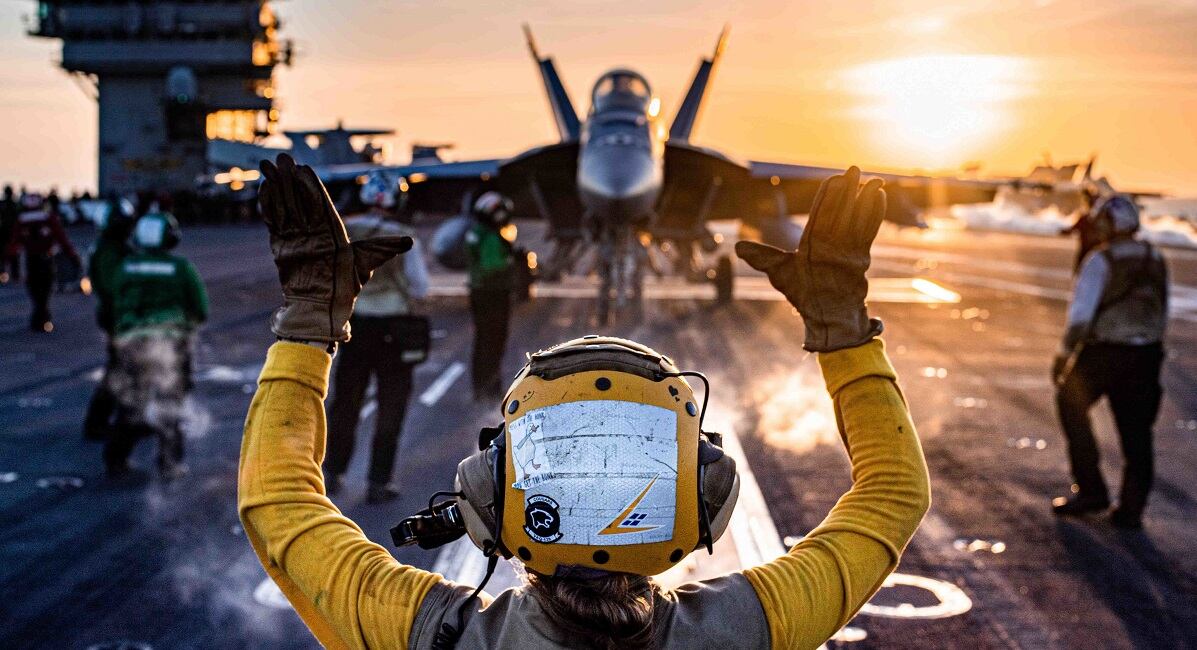A newly formed Marine force that deploys to Southeast Asia for long chunks of time has headed to the Philippines as the United States is bolstering its relationship with the strategically located ally.
Marine Rotational Force – Southeast Asia began its second rotational deployment Sept. 26 and is participating in the largest-yet iteration of the multilateral Sama Sama exercise, according to Marine Corps and Navy news releases.
Unlike a larger Marine expeditionary unit, the rotational force consists of nearly 200 Marines and sailors, including “a rifle platoon, joint terminal attack controllers, air and naval gunfire liaisons, explosive ordnance disposal Marines, and unmanned aerial systems operators, among others,” Marine spokesman Capt. Larry Boyd told Marine Corps Times.
The structure makes the force easier to move, sustain, and scale up or down than an approximately 2,200-person Marine expeditionary unit, according to Boyd and a 2022 news release about the force.
Positioning Marines forward in the Indo-Pacific is part of the Corps’ plan for countering a potential adversary as technologically adept as the Chinese military. The Marine rotational force is meant to train alongside allies and partners in Southeast Asia while also, according to a Marine Corps release, “standing ready to support crisis or contingency response in the region.”
Gen. Eric Smith, the Marine commandant, said in an informal video message to the force Sept. 28 following a trip to the Indo-Pacific region, “If you haven’t done a tour in the INDOPACOM, your career, your professional development? Not yet complete. You need to go. It’s a great place to be.”
A spokesman for Smith later clarified to Task & Purpose that the commandant’s comments about the benefits of serving in the Indo-Pacific didn’t constitute a policy announcement.
The Philippines is located along the South China Sea and south of Taiwan, the island that U.S. military leaders worry could be the site of a conflict with China. The Philippines itself has a fraught relationship with China over claims to waters in the South China Sea.
On Wednesday, a Chinese coast guard ship came within 3 feet of colliding with a Philippine patrol ship it was trying to block in the South China Sea, in an alarming incident that intensified fears that territorial disputes in the waters could spark a larger crisis, The Associated Press reported. The Philippines on Friday strongly condemned the Chinese ship’s maneuvers near Second Thomas Shoal, which the Asian neighbors both claim and has been the scene of frequent confrontations.
President Joe Biden and Philippine President Ferdinand Marcos Jr. in February announced that the Philippines would allow U.S. forces access to additional bases in the country, and the Balikatan exercise in April involving the two countries was the biggest iteration yet of the annual exercise.
RELATED

The ongoing, Navy-focused Sama Sama — which means “together” in Tagalog — involves troops from Australia, Canada, France, Japan, Malaysia, the Philippines, the United Kingdom and the United States, according to a Navy news release.
After Sama Sama, the Marines now in Southeast Asia are slated to participate in a series of back-to-back exercises. That includes KAMANDAG, an annual bilateral exercise between the U.S. and Philippine militaries, and exercises with the Royal Malaysian Navy and Indonesia’s Korps Marinir, according to Boyd.
In the coming months, U.S. and allied forces will practice helicopter operations, naval operations, amphibious raids and defending coastline and hold live-fire exercises, according to the Marine release about the deployment. Subject-matter experts will exchange knowledge about topics including reconnaissance, explosive ordnance disposal, and cyber and drone operations.
The inaugural deployment of Marine Rotational Force – Southeast Asia took place in fall 2022.
The Marine Rotational Force – Darwin, which began in 2012, is wrapping up its sixth-month deployment to Australia in October. That deployment was marked by tragedy in August when an MV-22 Osprey carrying 23 Marines crashed, killing three.
In charge of the rotational force in Southeast Asia is Col. Tom Siverts, the commanding officer of the 11th Marine Expeditionary Unit. The Marines and sailors in the rotational force hail from across I Marine Expeditionary Force, the Corps’ massive California-based force, according to Boyd.
The rotational force’s command and control is located on the United States’ West Coast, even though the force itself is positioned abroad. The distributed command and control fits into the Marine Corps’ Force Design 2030 initiative, which calls for more agile and less trackable units, by allowing for spread-out forces with smaller logistical requirements, according to the release about the deployment.
“Leading Marine Rotational Force - Southeast Asia while shoulder-to-shoulder with our partners, inside their respective command posts, provides a remarkable and dynamic vantage point,” Siverts said in the release.
The Associated Press contributed to this report.
Irene Loewenson is a staff reporter for Marine Corps Times. She joined Military Times as an editorial fellow in August 2022. She is a graduate of Williams College, where she was the editor-in-chief of the student newspaper.





